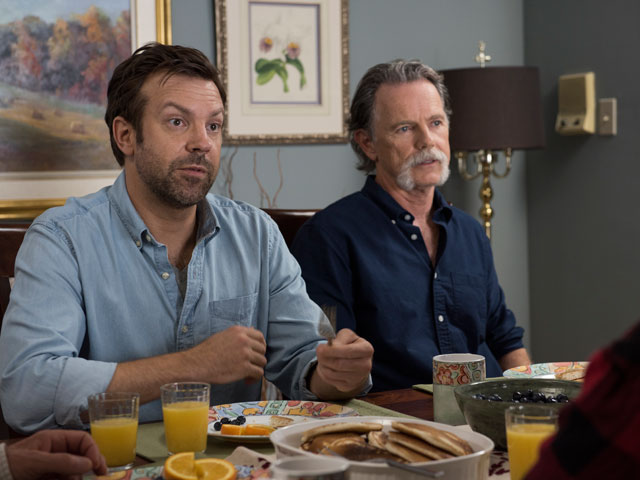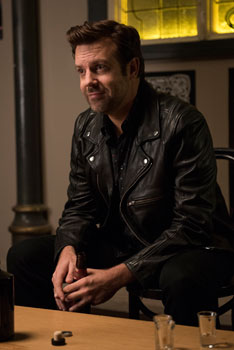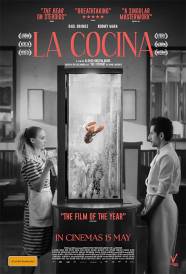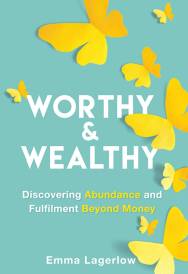Jason Sudeikis Kodachrome

For Kodachrome Fans, Road Ends at Photo Lab in Kansas
Cast: Ed Harris, Jason Sudeikis, Elizabeth Olsen, Bruce Greenwood
Director: Mark Raso
Genre: Drama
Synopsis: Music executive Matt (Jason Sudeikis) has been long estranged from his famous and philandering photographer father Ben (Ed Harris) when he is contacted by nurse Zooey (Olsen). Now dying, Ben wants Matt to drive him cross country to the last place in the world that still develops Kodachrome film –but only for another few weeks. Hauling half a lifetime of baggage and resentment, Matt hits the road with Ben and Zooey but the time is running out to develop the Kodachrome film, and on Ben himself.
Kodachrome
Release Date: August 23rd, 2018
 About The Production
About The Production
December 29, 2010. The New York Times ran an article by A. G. Sulzberger ("For Kodachrome Fans, Road Ends at Photo Lab in Kansas")about the discontinuation of Kodachrome film. Sulzberger, who wrote from the Midwest, received a tip from a Metro reporter in New York, who'd heard that the last machine in the world that could develop Kodachrome film " in a lab in Parsons, Kansas " was being retired. In this era of high speed tech obsolescence, this story was an endearing footnote in the evolution of film.
What lifted it up from being yet another technobituary, was the pilgrimage photographers who were making their way to Kansas. "Dozens of visitors and thousands of overnight packages have raced here, transforming this small prairie-bound city not far from the Oklahoma border for a brief time into a centre of nostalgia for the days when photographs appeared not in the sterile frame of a computer screen or in a pack of flimsy prints from the local drugstore, but in the warm glow of a projector pulling an image from a carousel of vivid slides." (Source: NYTimes). The individual stories of photographers who sent rolls of film or had travelled to Kansas (from across six continents) which Sulzberger focused on humanized the event, but it also tapped into the cult love which accompanied the actual film itself. By all accounts, as one photographer (who was an extra in the film) said, "Kodachrome was the king of film."
Eric Robinson, a partner at The Gotham Group, had been developing an original concept around the idea of one generation giving way to the next on a very human scale using the discontinuation of Kodachrome as a backdrop. Robinson and his partner at The Gotham Group, Ellen Goldsmith-Vein, teamed up with Dan Levine and Shawn Levy's 21 Laps to option the Sulzberger NY Times piece. Together, they brought the project and article to novelist and screenwriter, Jonathan Tropper, with whom 21 Laps had recently worked. Tropper thought about the idea for a few days, loving how "the Kodachrome story was the perfect allegory for the end of an era."
Dan Levine recalls, "Barely two days after giving Tropper the NY Times article, I was blown away when he came back with an emotionally powerful, fully realised story which, amazingly, is essentially what's up on the screen now. I don't think any of us have seen someone fully craft such a deep, resonant story in so short a period of time."
 Director's Statement
Director's Statement
Finding this film was serendipitous to say the least. I had woken up to feed my then 6-month old son, and every time I tried to put him down he would fuss and cry, so I kept him in my arms, opened up my computer and read the script for the first time. When I had finished, my son was sleeping, and I was in tears. I immediately knew that I needed to make this film. I could relate to both sides of the father–son relationship and the quality of the script, specifically in terms of character development, made me need to tell this story.
Ed Harris was Ben for me even before he was cast. I remember reading the script and finding myself reading his character's lines in his voice. He was the first person we went out to on the film; I met with him, explained my thoughts and he was on board. Jason and I had an extremely similar take on what the film should be about, we have sons that were born a week apart and were going through a similar experience adjusting to fatherhood. The three of us had similar thoughts about the film's themes of family and what it means to be a father, particularly how important it is to find the balance between art and parenthood. Lizzie Olsen was the unanimous choice to play Zooey; she is someone whose talents allow her to play the conduit between Ed Harris and Jason Sudeikis, which is not an easy proposition. When we met, it was amazing how well we aligned on where we needed to take Zooey as a character.
This film came together through the hard work and tireless effort of the producers. Everyone from the crew to the cast made sacrifices, both financially and with their time to ensure that we got this film made the right way. In addition to capturing this unique moment in time when a film stock so many people had grown up with was ending, I want this film to make people think about how their actions and choices affect those around them and how we need to listen, understand, and accept one another in order to move forward. And that ultimately we must forgive both ourselves and one another, to be at peace with ourselves and those around us.
-Mark Raso
 The Story And Casting
The Story And CastingBen Ryder
The character of Ben Ryder is, as Tropper described him, 'a super-ego kind of guy', an internationally renowned photographer whose work is patterned after the portraiture of the American photojournalist, Steve McCurry, best known for his 1984 photograph of the "Afghan Girl", which originally appeared on the cover of National Geographic.
The similarities between Ben and Steve McCurry start and end with the photography [McCurry did give the producers access to his photos for the film]. Ben's life centres completely around his art. It's his life and his passion, neglecting family and personal relationships as a result. Now, at the end of his life, he realises what he has sacrificed for his art and he's suffering for it. There is an imbedded metaphor in the film using Kodachrome film. While the film itself bears witness to people and events, this photographer has always hidden behind the camera and avoided engagement. This kind of detachment is systemic in any art form, but perhaps more so in photography, which brings the artist so close to the subject, present and in the moment, yet in order to create the shot, a professional emotional distance has to be maintained. "I started on the character who, as passionate as he is about his art and as deeply as he feels, he's always been one step removed from his own life. Now that he's dying, he's trying to correct the course," explained Jonathan Tropper. "But a lifetime of insulating yourself from what's going on around you is hard to undo in a few days." The struggle is the drama.
Ed Harris was the first actor to sign onto the film. "And we are here making this movie because Ed believed in the material," noted Robinson, "and working with him was a true honour and the culmination of a truly magical experience."
 Jonathan Tropper enjoyed constructing the character around Ed Harris, an actor who has "a certain hardness. He's almost like a granite man. It's exciting to take someone with that much strength and rigidity and watch it crack. Because Ed Harris's such a good actor that when he cracks, he takes us all with him." Once Harris agreed to the role, Mark Raso sent him a Leica camera which was the first time the actor has ever had a good camera because, up to that point, Harris has never been 'a camera person'. His preferred visual art form had been painting. "When you have a camera, you're constantly aware of what you're seeing and what would be good photographic framing," Ed Harris observed. "It's a different way of looking at things. I pay attention, but I don't look at things from a photographer's point of view. I liked seeing things differently. It was fun. That's part of why I enjoy doing what I do because there's always something new that you learn."
Jonathan Tropper enjoyed constructing the character around Ed Harris, an actor who has "a certain hardness. He's almost like a granite man. It's exciting to take someone with that much strength and rigidity and watch it crack. Because Ed Harris's such a good actor that when he cracks, he takes us all with him." Once Harris agreed to the role, Mark Raso sent him a Leica camera which was the first time the actor has ever had a good camera because, up to that point, Harris has never been 'a camera person'. His preferred visual art form had been painting. "When you have a camera, you're constantly aware of what you're seeing and what would be good photographic framing," Ed Harris observed. "It's a different way of looking at things. I pay attention, but I don't look at things from a photographer's point of view. I liked seeing things differently. It was fun. That's part of why I enjoy doing what I do because there's always something new that you learn." To play Ben, Ed Harris could not draw on personal experience because his own father, the person he admires the most in this world, treated every person he has met with kindness and respect. "It's 180 degrees different from Ben. It's been really interesting playing this guy because he's complex. Ben's got a good sense of humour and it's usually at the expense of somebody else. He knows he's on his last legs here, so he doesn't give a damn about too much and that offers a certain amount of freedom in terms of one's behaviour. There's a lot going on inside that he doesn't know how to share or to reveal. Through the process of this journey, he gets to the point where he actually does express himself to his son, and I think his son hears him. He's not asking for forgiveness, but he's trying to explain himself on some level and let his son know that he cares about him."
Matt Ryder
The flip side to the emotional detachment of the artist is the son of the father-artist, who understands that being seen does not mean being acknowledged. From Jason Sudeikis' point of view, this story is about Matt Ryder a 35-year-old music executive who is handsome, maybe trying a bit too hard to be hip and at a crossroads in his life. "One of those roads leads to a different job, a different career, one of those roads leads to a new romantic relationship and one of those roads leads to healing a fractured relationship with his estranged father who is dying. And each of those roads ends up in the same place. Like Ben's difficulty with intimacy, Matt has a similar problem, Jason Sudeikis explained. "Matt avoids intimacy by giving up on things versus pushing people away. Things that he loves, like playing the drums which he's still within a stone's throw of because he's still in the business side of music. That's his version of checking out before it was done. He's not taking responsibility for the apathy that he brings to the things that disappear in his life. That wasn't what led to the disappearance of his father, but he was definitely holding on to a large amount of pride to not make that connection throughout his life - up until it's forced upon him. It comes from not having a tremendous understanding of his own self-value. Sometimes the external can reward or fill those gaps quicker than the internal: making money, putting on a cool shirt, hanging out with a pretty girl. Those things shouldn't happen from the outside; they should come from within."
 Matt's mother had died when he was young and instead of caring for his son, Ben handed him off to relatives and went off to follow his career as a photographer. As the film begins, Matt is approached by Ben's care-giver, Zooey, to join them on a road trip to Parsons, Kansas. "The character of Matt Ryder goes through a tremendous arc from the beginning to the end of the film through his professional life, his personal life and his romantic life. It is turned completely upside down and torn apart," said Robinson.
Matt's mother had died when he was young and instead of caring for his son, Ben handed him off to relatives and went off to follow his career as a photographer. As the film begins, Matt is approached by Ben's care-giver, Zooey, to join them on a road trip to Parsons, Kansas. "The character of Matt Ryder goes through a tremendous arc from the beginning to the end of the film through his professional life, his personal life and his romantic life. It is turned completely upside down and torn apart," said Robinson. The space between Matt and Ben is where Zooey resides in this story. At first, Matt cannot stand Zoe. He does not want to be around his father. She represents his father. There's a poignant moment where he watches the two of them. They can speak to each other without yelling. They can laugh at each other's jokes. They have a history that he and his father don't have. He feels like the outsider who has missed out on so much of what Ben and Zooey have been able to share. But as much as he feels jealousy, it is also the key to Matt thinking that maybe there is some humanity in Ben that he could try to find.
"Jonathan wrote characters that come with levity balanced out by great drama. Jason is a fantastic actor and he's found the emotional nuances and sometimes you see it only in his eyes, the bubbling anger, the love and the humour. Sometimes Jason's most powerful performances are in scenes when he doesn't say a word. He's been able to find the emotion in every line. But it's rare for audiences to see a performance from Jason Sudeikis when he isn't speaking," he continued.
 Mark Raso's strategy as a director is to build the armature and let actors put the flesh on it. "I was very open to what the actors would bring to their roles. You need the actors to enliven it very quickly. Matt is wounded. He's been angry his whole life. It's easier to deal with anger than sadness. Anger can be projected onto someone else; sadness is internal. This anger has informed every decision Matt's made as an adult, and unconsciously, he's spent his life trying to get his father's approval while simultaneously saying "screw you." So, he's coming along just to know that he saw him and not missing anything, but determined not to give his father the satisfaction of forgiveness. Over time, he realizes his father is suffering. His journey is the ultimate realization that there's nothing to be gained by staying angry. And throughout this road trip, Jason has delivered a level of pain in this character that is not what you'd expect from watching his comedies," Tropper observed.
Mark Raso's strategy as a director is to build the armature and let actors put the flesh on it. "I was very open to what the actors would bring to their roles. You need the actors to enliven it very quickly. Matt is wounded. He's been angry his whole life. It's easier to deal with anger than sadness. Anger can be projected onto someone else; sadness is internal. This anger has informed every decision Matt's made as an adult, and unconsciously, he's spent his life trying to get his father's approval while simultaneously saying "screw you." So, he's coming along just to know that he saw him and not missing anything, but determined not to give his father the satisfaction of forgiveness. Over time, he realizes his father is suffering. His journey is the ultimate realization that there's nothing to be gained by staying angry. And throughout this road trip, Jason has delivered a level of pain in this character that is not what you'd expect from watching his comedies," Tropper observed. Road trip movies are about transformation, and a large part of that begins with acceptance. "Embracing the insanity (or riding a horse in the direction it's facing) is part of accepting people for who they are, faults and all," said Jason Sudeikis. "The human experience is breaking through all those things and having conversations that allow us to not distance ourselves, but step closer to one another and see each other for what we are - complicated, interesting people. Matt's journey, actually each of their journeys, is about them discovering that they're complicated and broken and that's ok. A little bit of self-love goes a long way."
Zooey Kern
The Zooey that audiences will see on the screen is different than how she originally appeared on the page. She is Ben Ryder's care-giver, but like Matt, she's a lost soul coming from a history of broken relationships and she's effectively been hiding from the world at Ben's house for the last few years. Initially, the character was written more as a tag-along, so the key to making the character substantial is in the depth. The difference comes from the level of responsibility she takes for her actions and her life. With the energy and the attitude that Elizabeth Olsen brought to the role, the character was raised, with subtle tweaks of off-screen choices, from simply servicing the two main characters up to the same level as Matt and Ben.
 The baseline of the character, as Tropper originally wrote her, was that Zooey had the personality to power through people with her good cheer and her optimism. What Elisabeth Olsen did was add a jaded take. "She's been dealing with Ben for three years so she's not oblivious to his personality, but she's become impervious and has developed a really thick skin which works out to be a perfect foil between Ben and Matt. With Matt, she's dealing with a colleague and peer and with Ben, you see compassion and sweetness which creates a really interesting dichotomy. On one hand, holding her own ground strongly, and on the other, opening her heart. As Matt and Ben collide, Zooey's treatment of both merges."
The baseline of the character, as Tropper originally wrote her, was that Zooey had the personality to power through people with her good cheer and her optimism. What Elisabeth Olsen did was add a jaded take. "She's been dealing with Ben for three years so she's not oblivious to his personality, but she's become impervious and has developed a really thick skin which works out to be a perfect foil between Ben and Matt. With Matt, she's dealing with a colleague and peer and with Ben, you see compassion and sweetness which creates a really interesting dichotomy. On one hand, holding her own ground strongly, and on the other, opening her heart. As Matt and Ben collide, Zooey's treatment of both merges." Olsen has said that when considering a part, "The only thing I care about is if the team is great, the script is good and the character is someone I can connect with in my gut." When it came to considering Kodachrome, the initial draw was the character and "her forwardness and abrasiveness. I enjoy that aspect of her. Then I learned about Ed and Jason being involved and they seemed like a fun duo to hang out with. And then I met with Mark. He was very open to collaboration. I had a few things I wanted to change so I met with him and Jonathan and we made certain changes." Also, Olsen wanted to be able to sing with Jason Sudeikis, particularly since the song was Live's 'Lightning Crashes', which, being a child of the 90's, is one of her favourite songs to sing.
The primary change was turning Zooey from being a victim of events in her past to being a selfsabotager. "Female characters have been portrayed for a very long time as victims," pointed out Robinson. With this change, it not only removed the cliché, but also allowed the character much more control and more nuance, and regardless of whether that makes her life better or worse, it makes her more interesting. It also makes this a genuine three-hander which is what Tropper always meant it to be. "I feel very comfortable with difficult older men," Elisabeth Olsen declared. So when reading the script, it did not seem strange that someone of Zooey's age could be comfortable with someone Ben's age. Throughout the road trip, she holds the line between Ben and Matt until she realises she has crossed her own line. After playing referee the whole time, she's now in the game.
"Elizabeth Olsen is fantastic," attested Mark Raso. "She's a wonderful actress and brought a humanity with her. She's beautiful, but she's vulnerable She's played this role with strength and confidence, but also with great humour and great lightness. She was the last actor cast, but our first choice."
Shooting Kodachrome On Film
For obvious reasons, Kodachrome was shot on film, specifically Vision 35mm film (5207 and 5219 stock). Anything else would have been cinematically ironic. Robinson felt fortunate to build a relationship with Kodak which made this possible. "There's a line in the script when Ben explains that Kodachrome is an artefact. It is a witness to that moment in history and time. Because Kodachrome film becomes the slide, there are no copies. You are using the very images that were captured. This is what made the film so beloved. You'd be able to hold that memory in the palm of your hand."
 Shooting on film is certainly not an extinct practice, but it is far less common than working in digital. In a practical sense, this meant finding a crew experienced in all that film requires and this applied not only to the camera team, but also to lighting, hair, makeup, and wardrobe. The veteran portion of the Kodachrome crew was really excited to be able to shoot this way again and the younger crew enjoyed the hands-on learning experience. Although there are a handful of current productions which have shot on film, Robinson felt the cameras were collecting dust on a shelf before this film came along.
Shooting on film is certainly not an extinct practice, but it is far less common than working in digital. In a practical sense, this meant finding a crew experienced in all that film requires and this applied not only to the camera team, but also to lighting, hair, makeup, and wardrobe. The veteran portion of the Kodachrome crew was really excited to be able to shoot this way again and the younger crew enjoyed the hands-on learning experience. Although there are a handful of current productions which have shot on film, Robinson felt the cameras were collecting dust on a shelf before this film came along. Mark Raso had shot on film a decade before, and thoroughly enjoyed the experience, but wasn't sure he'd have the opportunity to ever do it again. During the last week of principal photography, he declared that moving forward, he hoped to shoot everything this way. "I have an analog heart, not a digital one. You have to have both in the world we live in, but my loyalties are analog. I used to love reading the newspaper. I read it online now, but you don't take the time, have a cup of coffee and flip through the pages. When listening to music, it used to be a process of listening to the whole album, and with photography, I remember getting photos back from the labs and looking at every one. Slowly it's all melting away. I didn't realise, until I started making this film, how present analog makes you, and you have to be present when you are making a film. You have to be in the moment. For instance, I had to completely trust the DP, camera operator and focus puller because I couldn't see footage for two days because the rushes had to be sent away to the lab."
Cinematographer Alan Poon was fortunate in his career as a DP because he caught the tail end of filmmaking before the industry flipped over to digital, meaning he didn't have a steep learning curve on Kodachrome. "Film has this amazing quality like no other. It's organic, it's beautiful on skin tones and it captures light in an incredible way. Working in this medium means you have to go back to trusting your eye and your meter. It's not 'what you see is what you get on the monitor' so you have to rely on your intuition, knowledge and skill set."
Old habits " not that shooting digital is old " but relatively old habits die hard. Raso had to unlearn the reflexive urge to 'press playback' because that's not an option with film. Actors can't come around to the monitor and review their last take. The relationship between actors and director is much more connected. And there was the sound of the film in the camera. "When you're standing next to it, it's inspiring. Not to be clichéd, but it feels like art. It doesn't feel like you are posting something to YouTube."
 Jason Sudeikis, acting in film since 2007, figures that since he's had wrinkles on his forehead since the age of five, he's better suited to the end results of film rather than 4K HD. "But apart from the vanity of the situation, I'm glad we did shoot this on film out of respect for the theme of the story." Like Mark Raso, Jason Sudeikis embraces what he calls 'old school virtues' like listening to full albums, pinball, punctuation and talking to people in person.
Jason Sudeikis, acting in film since 2007, figures that since he's had wrinkles on his forehead since the age of five, he's better suited to the end results of film rather than 4K HD. "But apart from the vanity of the situation, I'm glad we did shoot this on film out of respect for the theme of the story." Like Mark Raso, Jason Sudeikis embraces what he calls 'old school virtues' like listening to full albums, pinball, punctuation and talking to people in person. Harris feels more strongly on the subject. Having just finished working on the Aronofsky project in Montreal, which was also shot on film, he likes it, enough that should he direct another movie of his own, it will be shot that way. "It's tangible. It's not in the ether. It's not digital - it's celluloid, even though they transfer it to digital to show it in theatres. The quality of film, the look of it, the grain of it has more humanity to it for me. It feels more real. As an actor, I prefer film. There are some great cinematographers who can shoot on digital and it can feel like film, but it can also be lit in such a way that that is so clear and so bright and it's like 'get outta my face'. I don't want to see that much. Digital has no texture, it's too flat."
Kodachrome
Release Date: August 23rd, 2018
MORE



